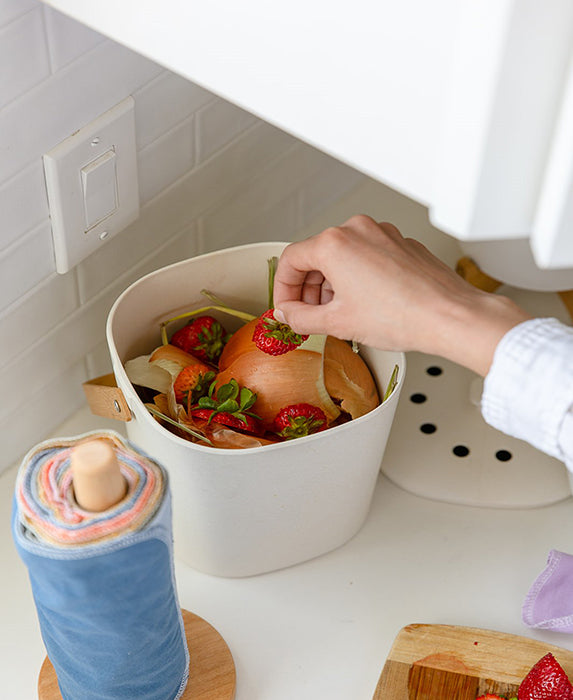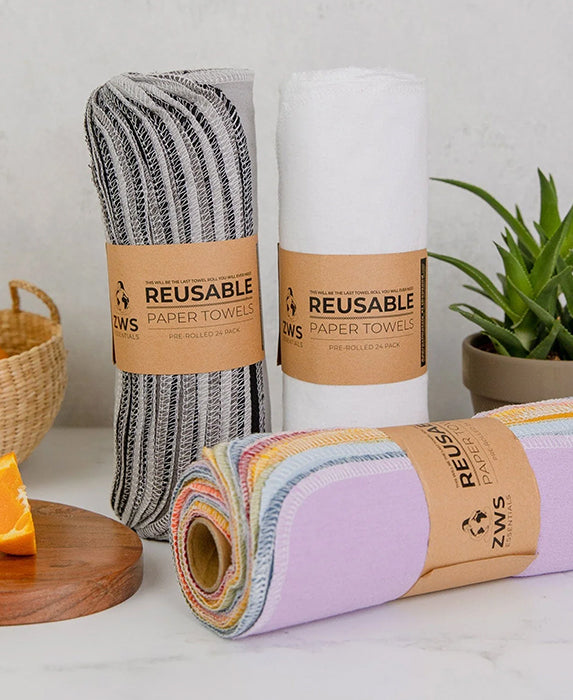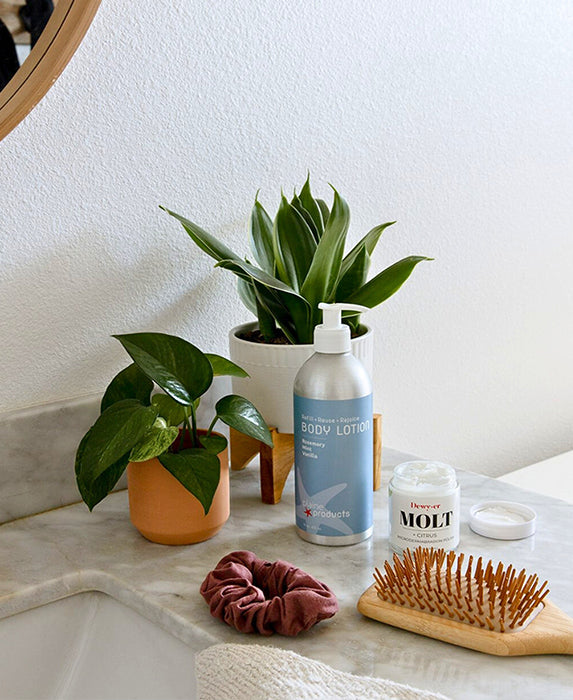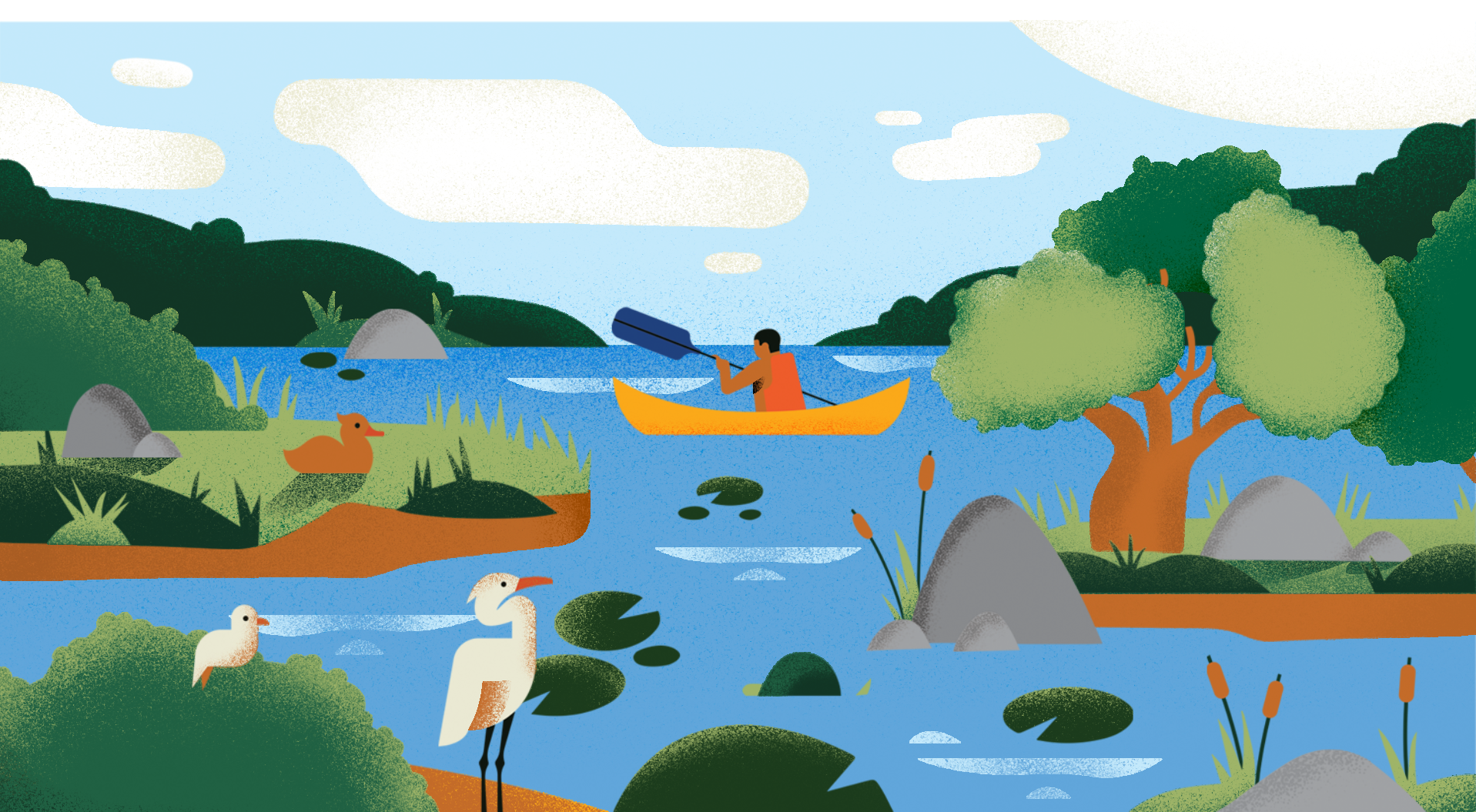The journey towards living a less wasteful lifestyle isn’t always easy… especially when doing things like grocery shopping. From plastic packaged produce to non-recyclable snack packaging, planning a plastic-free grocery store trip can seem impossible. The good news is that you are not alone! Consumers all over the world are making changes during their shopping trips – and supermarkets are taking notice. Natural grocer Trader Joes has vowed to reduce their packaging by 2020, and others are beginning to follow suit. By simply taking personal actions at the store you can send a much larger message.
To learn more about how to avoid plastic on your next shopping trip, and to get first hand feedback from someone trying to reduce their grocery store related waste, we’re having Meredith, a graduate student of Ecopsychology, tell her story as part of a new series we’re doing: Sustainability Stories!
A Plastic Awareness Journey: How to Avoid Plastic at the Grocery Store
“This is the story of my journey towards plastic-free living. Let me start off by saying, my life is not completely plastic-free. But hey, I’ve started the change I want to be a part of. In fact, the reason I started trying to avoid plastic was because of a class project as a part of my master’s program. This class project was all about changing a behavior, pattern, or habit in my daily life that was inhibiting sustainability or harming the earth in one way or another. With all the media surrounding plastic in our oceans, and those horrible videos about wildlife eating or getting stuck in plastic pollution, I decided I would try to avoid it (especially at the grocery stores).
The first day that I went to the grocery store after deciding on my intention for the project, I felt completely overwhelmed and ashamed by all the plastic I saw. It’s everywhere! I watched as my partner grabbed for plastic produce bags left and right for each individual piece of produce. There were even certain produce items that you could only get pre-wrapped in plastic! I tried to just be an observer during this first grocery trip but felt myself cringing at each plastic bag and plastic container. I found myself staring at other people’s plastic-filled grocery carts, wanting to dump them all out (including my own)!
As I continued with the project, I started to learn about why plastic was such a problem. Plastic does not decompose or return to the earth in any form. Some plastic is recyclable, but not all plastic is recycled. Excess plastic is dumped at landfills where it either will leach harmful chemicals into the soil and groundwater; is burned, emitting carbon dioxide and other toxic gasses into the atmosphere adding to climate change; or is converted into microplastics that spread to every surface of the Earth. Other plastic waste ends up as pollution on our land and in our oceans, poisoning and entangling wildlife that mistake it for food. The world continues to manufacture and use plastic at alarming rates because of its cheap, versatile, durable, and lightweight characteristics.
Plastic Production & Recycling
An estimated 8% of the world’s oil production is used to produce plastics, meaning the plastic industry bolsters the oil industry’s attempts to continue oil production through pernicious activities like fracking. Plus, the actual plastic production process also releases noxious chemicals into the air. Plastic manufacturers use carcinogenic, neurotoxic, and hormone-disrupting chemical additives like BPA and phthalates to make plastic products more flexible, durable, and versatile. The extraction of resources to create plastic through oil production and the actual manufacturing of plastics account for serious environmental and human health hazards.
So, then I came to think that as long as I recycle my plastics, I should be fine, right? But unfortunately, recycling is just a band-aid on a broken system. Some plastic is recycled (about 7% in America), depending on the market of post-consumer recyclables, government regulation, waste contamination, individual awareness, and availability of recycling streams. Recycling plastic also downgrades the product in quality, meaning that it can only be recycled 2-3 times before it is unusable, or must be upcycled. We used to send our recycled plastic over to China to deal with, but in 2018 that all changed. China banned imported plastic waste which is causing excess recycled plastic to end up in our own domestic landfills!
Landfills & Microplastics
Fact: half of all plastic manufactured becomes trash in less than one year. In more developed countries where landfills are better managed and effectively regulated, plastic garbage is disposed of through burial methods. However, if mishandled, plastics can leach harmful chemicals into the soil, groundwater, and neighboring environments. In less developed countries, the lightweight plastic garbage in landfills often blows off and becomes litter in the environment. Some landfills choose to utilize plastic waste management technologies that include incineration, co-incineration, gasification, and pyrolysis – which emits toxic smoke and particulates that can deposit in soil and water, eventually entering the human body through the food chain and triggering respiratory health problems to those nearby.
Landfills have to take these actions to reduce the amount of plastic waste they hold because plastic will never truly biodegrade or disappear.. But instead become something called ‘microplastics’. Primary microplastics are produced for functionality in things like personal care products, whereas secondary microplastics form from the breakdown or degradation of larger plastics. Microplastics enter the human body through drinking, eating, ingestion, and breathing, and are linked to health impacts like cancers, tissue damage, and fibrosis. In marine ecosystems, wildlife of all sizes from plankton to whales can consume and absorb these microplastic pieces as well. Studies show that millions of marine species have ingested microplastics, reducing their growth and development, slowing metabolic rate, and potentially making its way up the food chain to humans through seafood consumption.
From landfills to oceans, rivers to cities, the issue is simple: there is too much plastic on our planet, and we need to find more solutions for how to address the problem we’ve created, while ensuring we don’t make it worse.
Being a Conscious Consumer
Plastic, despite all of its flaws, became popular because it’s versatile, durable, and created a new wave of inexpensive, single-use items that brought convenience and ease to the lives of millions. Companies creating plastic kept consumers in the dark to the dangers of the material, and worked hard to make plastics all but impossible to avoid. But, over the last half century, scientists and consumers alike have learned about the dangers of plastic consumption at this rate – for human health and planetary health – and we need to find a way to change our behaviors before it’s too late. The plastic system is ruled by the phrase: reduce, reuse, recycle – but what it lacks is “refuse”.
A shift in consciousness is occurring around the world and it is now our responsibility to become accountable consumers by shopping at sustainably conscious stores, transforming our individual lifestyles, and applying social pressure to institutions for change. By saying no to plastic, and instead opting for recycled, upcycled, and other eco-friendly materials, we can make a huge impact as consumers. And companies will notice!
Where My Journey Has Led Me
So here I am, eyes wide open to our plastic problem, wondering if I’m doing enough. It’s completely overwhelming to see how much plastic is affecting our lives and the ecosystems all around us. But, knowing that I had at least opened myself up to learning about the plastic problem, I was beginning to really understand why it was so important to make the changes I needed to make in order to continue avoiding plastic. I inhabited a new narrative around the awareness, motivation, and changes I needed to make in my life to maneuver the institutional and psychological barriers that dictated my plastic usage.
The stories we choose to inhabit affect our psychological ability to change our behavior. We can choose to live a story where massive societal change towards a sustainable future is happening, and we can contribute towards it positively with our own innovative solutions.
Facing the repressed guilt I had around all my years of unconscious plastic usage created excitement around finding new ways of avoiding plastic. After about a month into my project, I overcame a huge obstacle – I made my first plastic-free trip to the grocery store. I was so proud of myself that I had tears in my eyes at checkout. From there, I started learning how to make certain food items from scratch like bread, tortillas, cheese, and pizza crust. I began shifting my diet away from dairy, meat, and processed foods. I now always have reusable grocery and produce bags on hand and have become accustomed to placing certain loose produce items directly in my cart.
Sustainability sometimes seems far away, ungraspable, unattainable. Often, we feel constrained, believing that our behavior will not make any impact. With small and very doable changes in my life, I have started getting rid of plastic packaging, and began other acts of sustainability like recycling, composting, and using every part of the meat I choose to buy. I joined a local CSA (Community Supported Agriculture Farm) and am now currently growing an array of herbs, fruits, and vegetables at home. I feel this new sense of power and elation as I have begun to align my actions to my values and identity by participating in a new type of responsible consumerism. It really just takes a little awareness, research, motivation, and a whole lot of patience to make these changes occur.
Sustainability is not only about “going green” but also rethinking how we live and what we value. As humans, the daunting ecological crises we are seeing all around us causes many of us to shut down. However, if you’re willing to start slowly with little changes in behavior and patterns, you’ll start to feel that sense of pride knowing that you’re becoming a part of the solution. From my own victories and failures at the grocery store, I have learned so much – so I put together some suggestions to aid in your pursuit of a plastic-free grocery experience. There are three levels of suggestions of how to start small, then level up as you become more comfortable avoiding plastic at the grocery store.
Level 1:
- Bring reusable grocery and produce bags
- Start to get comfortable putting loose items in your cart
- Reuse or repurpose plastic bags
- Buy substitutes for plastic-wrapped items
- Get familiar with what items typically come in plastic and what does not
Level 2:
- Meal plan around what is available without plastic
- Shop at more sustainable grocery stores or butchers that offer meat and dairy items that can be put in home-brought containers or alternative wrapping
- Get compostable trash bags for trash bins
- Buy items in bulk
- Use milk cartons that can be returned to the grocery store for reuse
Level 3:
- Find recipes and learn how to make foods that are typically plastic-packaged like bread, tortillas, cheese, alternative forms of milk
- Join a local CSA (Community Supported Agriculture) farm to get your fruits, veggies, meat, eggs, and milk from (some farms may not offer meat or dairy options)
- Grow herbs, fruits, and vegetables
- Create meals around the food available, instead of using recipes to purchase the food items needed
- Ask your local grocery store to use compostable produce bags, allow customers to bring their own containers for meat and dairy products, and see how else they can make changes towards sustainability
Moral of the Story
The most important thing is that you start these changes at a level of feasible integration. Trying too much, too fast, will cause you to burnout – which nobody wants. The truth is that it is nearly impossible to avoid all plastic and plastic packaging in the current state of our culture. Blaming or shaming yourself can also cause burnout that diminishes the value of the steps taken towards avoiding plastic and honoring your relationship with the earth.
Good luck on your journey. Set your intentions, start slow, integrate patiently, forgive yourself for buying plastic when you have to, and be proud of yourself for making the change towards sustainability. You got this!”
This blog post was originally published on May 15, 2019 and was most recently updated on October 27, 2022.









